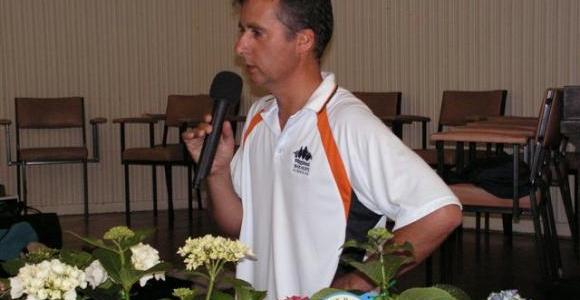
Hydrangeas
You are here

John Warner, from Warner’s Nurseries, gave us a fabulous talk on Hydrangeas. He commented that in the past 5-6 years, he had seen big changes with Stage 3A restrictions and very limited rain. Water tanks and grey water recycling are now high on our agenda and gardeners have become more savvy with the use of water.
John’s great-grandfather, who had been gardener at Windsor Castle, had arrived in Australia from England and established a nursery in Auburn Road Hawthorn in 1914, after settling in Camberwell. He propagated plants from cuttings he sourced in the neighbourhood, through unusual means! His sons joined the business and he purchased several acres of land in Burwood. He later bought 40 acres in Narre Warren North and sold the land in Burwood and Rowville in 2000.
John said that business is good, and they still propagate 80% of their stock. The business has installed systems to use water more efficiently.
John then gave us advice on caring for our hydrangeas, which are a garden classic. Warner’s have selected the best varieties which they have bred over the last 20-30 years. Hydrangeas are native to China and Japan and were brought to England by explorers, and bred in England and France.
Home gardeners should take cuttings in winter and strike in a peat mix with bark. They then need to be potted up the following year. Prune on Australia Day for flowers in April and November. Feed well with Osmocote after pruning. The white varieties always stay white, but others can be changed. pH6 will result in red flowers and dolomite is used to increase acidity. Blue flowers need ph5, so add aluminium sulphate which is a blueing agent, and feed with low phosphorus fertilizer. Different varieties are available including double flowered – there are over 50 species.
Aphids on new spring growth and mites in summer can be a problem; slugs can also chew their leaves. Hydrangeas need to be watered regularly in summer and mulched with pea straw; it’s good to plant them in an area where grey water can be recycled.
They need to be planted in a fairly sheltered spot, such as around trees, as heavy hail or late frosts can damage them. When blooming, they can be placed in a light spot inside for several weeks, but not in direct sunlight. John finished his talk by discussing they way his nursery has been established to take advantage of recycled water.








